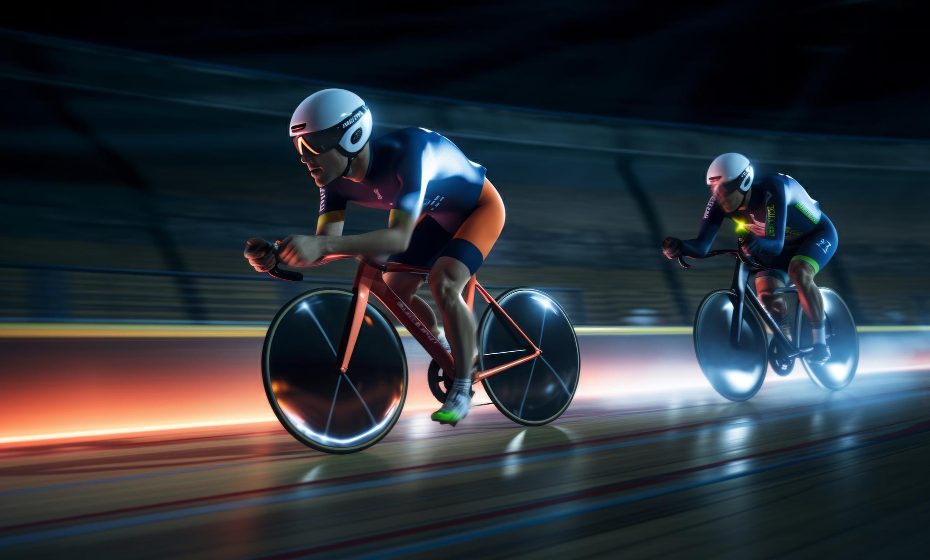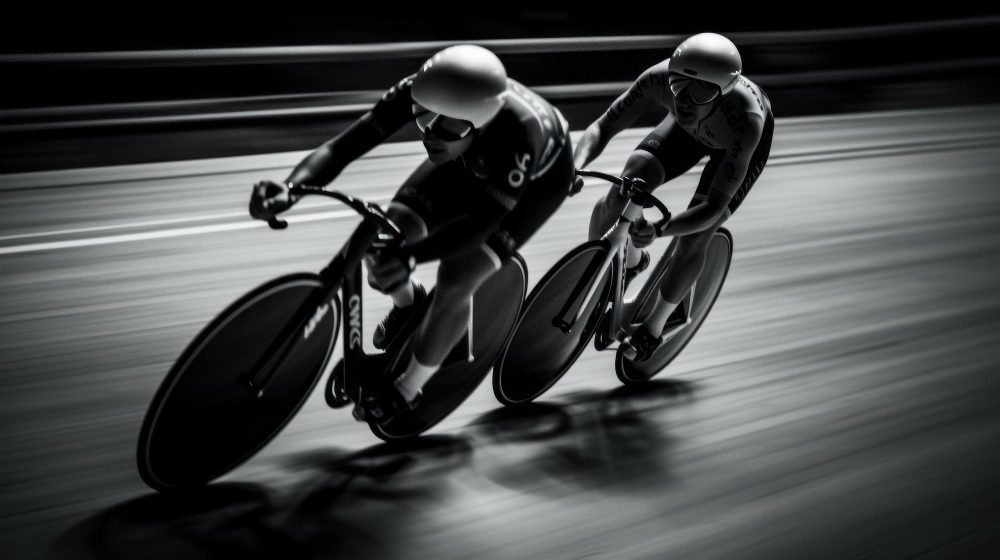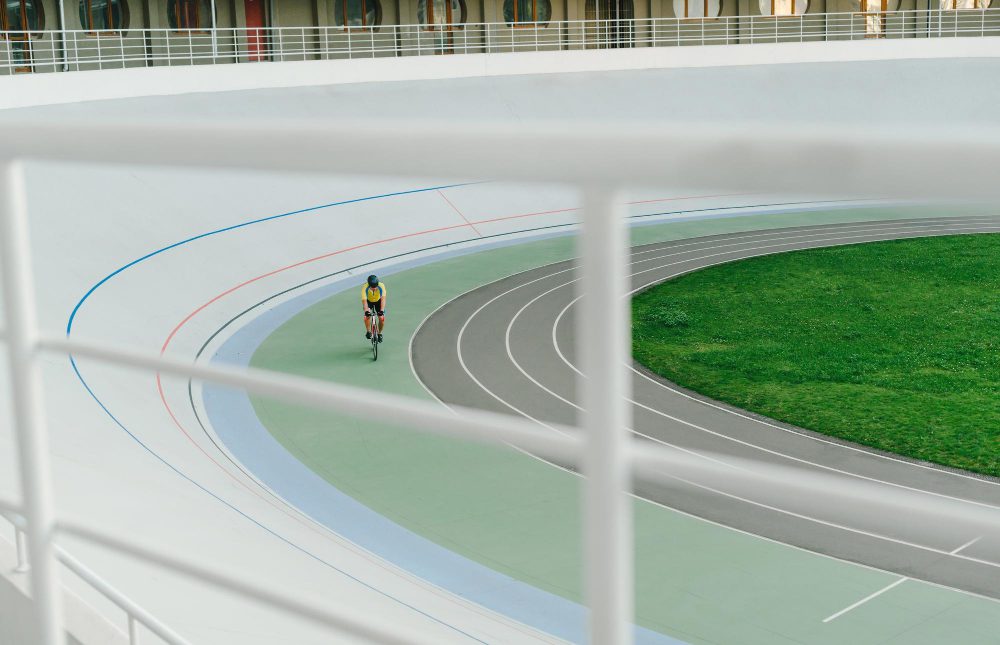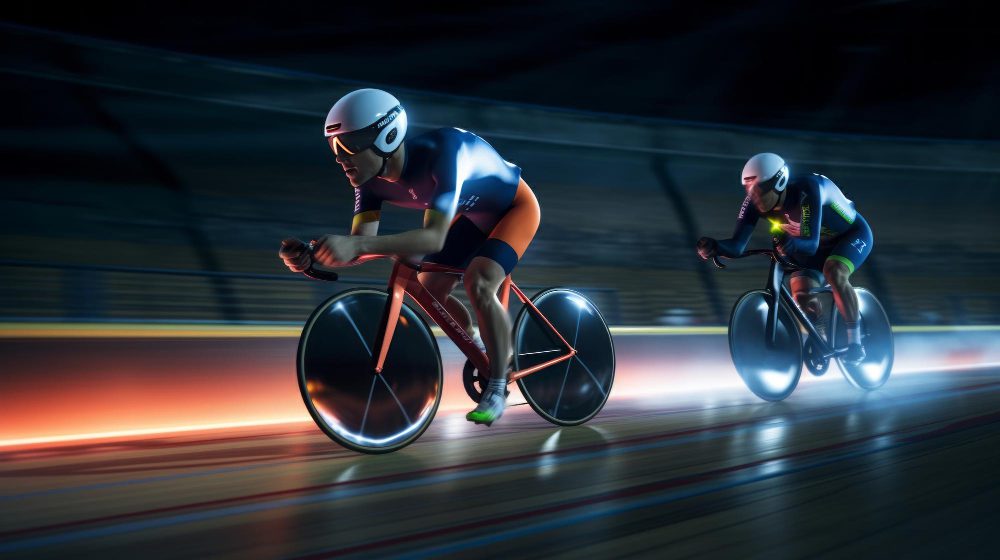Why do cyclists lean inward at circular turning?
When you see a cyclist making a sharp turn or navigating a curve, you might notice that they lean towards the inside of the turn. This leaning motion is not just for show; it serves a crucial purpose in maintaining balance and stability during the turn. In this article, we will explore the reasons behind why cyclists lean inward when making circular turns.
The physics behind the lean
To understand why cyclists lean inward, we need to delve into the principles of physics at play. When a cyclist makes a turn, there are two main forces at work: the gravitational force pulling the cyclist and bike towards the ground, and the centrifugal force pushing the cyclist and bike away from the turn.
The gravitational force ensures that the cyclist remains in contact with the ground, while the centrifugal force tries to push the cyclist away from the turn. To counteract the effects of the centrifugal force and maintain balance, the cyclist needs to shift their weight towards the inside of the turn, effectively leaning inward.
This lean helps to redistribute the cyclist’s center of mass and align it with the combined center of gravity of the cyclist and the bicycle. By doing so, the cyclist creates a more stable and balanced position, minimizing the risk of losing control or skidding outwards during the turn.
The importance of speed and radius
The degree of lean required by a cyclist depends on various factors, including the speed at which they are traveling and the radius of the turn. As the speed increases or the turn becomes sharper, the centrifugal force exerted on the cyclist also increases. Consequently, the cyclist needs to lean further inward to counterbalance this force and maintain stability.
A sharper turn or a higher speed requires a greater lean because the centrifugal force acting on the cyclist and bike is stronger. To execute these turns safely and effectively, cyclists must understand how to adjust their body position and lean accordingly.
The role of countersteering
Another factor that influences a cyclist’s lean during turning is the technique known as countersteering. Countersteering involves briefly steering in the opposite direction of the intended turn. For example, when making a right turn, a cyclist would first steer slightly to the left before initiating the actual right turn.
This countersteering action helps the cyclist initiate the lean and shift their weight towards the inside of the turn. It allows them to overcome the initial resistance and enables a smooth and controlled transition into the turn. Without countersteering, executing sharp turns at higher speeds would be significantly more challenging.
Why do cyclists race in a line?
Cycling races often feature a group of cyclists riding in a line formation, known as a peloton. This strategic positioning is not accidental; it serves several purposes that benefit the riders individually and as a group.
Drafting and Reducing Wind Resistance
One key reason for racing in a line is to take advantage of the drafting effect. By riding closely behind the cyclist in front, the trailing rider experiences reduced wind resistance, which can save up to 30% of their energy expenditure compared to riding alone. This is crucial for conserving energy during long races or stages.
Efficient Communication and Teamwork
In professional cycling, teams work together to support their designated leaders. Riding in a line allows teammates to communicate more effectively, often through subtle hand signals and short phrases. This enables them to strategize, relay information about the race, or coordinate attacks against rival teams.
Safety and Visibility
Riding in a line also enhances safety. By maintaining a predictable formation, cyclists reduce the risk of collisions and improve visibility for themselves and other road users. This is particularly important during fast-paced races where the peloton can stretch out and spread across the road.
The Role of Tactics
Racing in a line is also a tactical move to gain an advantage over opponents. Through coordinated efforts, teams can control the pace of the race, chase down breakaway riders, or strategically position their leaders for a sprint finish. This can make it harder for individual riders to break away and maintain a lead.
“Riders who position themselves well within the peloton have a better chance of staying in contention during a race.” – Cycling Coach
In summary, the practice of racing in a line offers benefits such as drafting for energy conservation, efficient communication among teammates, enhanced safety, and strategic advantages. This tactic allows cyclists to work together effectively and improve their chances of success in competitive races.
Why do cyclists crouch when they are racing?
When it comes to competitive cycling, you may have noticed that professional cyclists often adopt a distinct crouched position while racing. This position, known as the aerodynamic or “aero” position, is favored by riders for several key reasons.
Reducing Wind Resistance
The primary purpose of crouching is to minimize wind resistance. By hunching their bodies and tucking in their elbows, cyclists can reduce the amount of air resistance they encounter, allowing them to maintain higher speeds with less effort. The more streamlined the body, the less energy is wasted pushing against the wind. This is particularly crucial in races where every fraction of a second counts.
Increasing Speed and Efficiency
Crouching also helps cyclists generate more power through efficient pedaling. When riders hunch forward, their body weight is shifted towards the front of the bike, placing more pressure on the pedals. This positioning allows for a more forceful downward pedal stroke, enabling cyclists to apply greater power to the bike’s drivetrain and propel themselves forward with increased speed.
Maintaining Control and Stability
Another benefit of the crouched position is improved control and stability. By lowering their center of gravity and distributing their weight between the handlebars and saddle, cyclists enhance their balance and maneuverability. This becomes particularly important when navigating sharp turns or riding in adverse weather conditions.
“The crouched position allows cyclists to harness the full potential of their physical abilities,” says professional cyclist Mark Smith.
“It’s about finding that perfect balance between optimum aerodynamics and maintaining control over the bike.”
To illustrate the impact of the aerodynamic position on cycling performance, let’s take a look at a comparison table:
| Aero Position | Upright Position | |
|---|---|---|
| Speed | Increased | Decreased |
| Aerodynamic Efficiency | Optimized | Reduced |
| Power Output | Enhanced | Limited |
| Control and Stability | Improved | Lessened |
In conclusion, the crouched position adopted by cyclists during races serves multiple purposes: reducing wind resistance, increasing speed and efficiency, and maintaining control and stability. By sacrificing comfort for performance gains, riders can achieve their maximum potential on the bike.
Why do cyclists arch their back?
When you see cyclists whizzing past, one thing that often catches your eye is their arched back. But have you ever wondered why cyclists adopt this position? There are a few reasons behind this posture, and understanding them can help you improve your own cycling technique.
The aerodynamic advantage
One of the primary reasons cyclists arch their back is to reduce wind resistance and increase their speed. By lowering the front of their body and elongating their torso, cyclists can create a more streamlined shape that allows air to flow smoothly around them. This minimizes drag and enables them to slice through the air more efficiently.
Engaging core muscles
Arching the back also engages the core muscles, which are essential for stabilizing the body during cycling. The abdominal and lower back muscles work together to provide support and maintain balance on the bike. By maintaining a slight arch in the back, cyclists can activate these muscles and improve their overall power output.
Enhanced breathing and comfort
In addition to the aerodynamic and muscle engagement benefits, arching the back can improve breathing and comfort while cycling. By opening up the chest and stretching the diaphragm, cyclists can take in deeper breaths, delivering more oxygen to their muscles. This can help improve endurance and performance on longer rides. Additionally, arching the back can alleviate pressure on the shoulders and wrists, reducing discomfort during long hours in the saddle.
“The arched back position in cycling helps to minimize drag and maximize power output while engaging core muscles.”
To sum it up, the arched back position in cycling offers both aerodynamic advantages and engages the core muscles for better stability and power output. It also improves breathing and comfort during rides. If you’re a cyclist looking to enhance your performance, consider practicing this posture and see the difference it can make.
Why does a cyclist lean to one side while cycling?
Have you ever noticed how cyclists often lean to one side while cycling? This behavior is not just a random quirk; it actually serves an important purpose. Understanding why cyclists lean can shed light on the dynamics of cycling and help you become a more skilled rider.
The Role of Centripetal Force
When a cyclist takes a turn, they lean their body into the curve. This is due to the centripetal force acting on the bike and the rider. As the cyclist leans, their center of gravity shifts towards the inside of the turn, allowing them to maintain balance.
Bicycle Geometry and Leaning
Bicycle geometry also plays a role in why cyclists lean. A bike’s frame, fork, and handlebar geometry affect its stability and handling characteristics. When making a turn, cyclists rely on the bike’s design to maintain stability as they lean into the curve.
Countersteering
Another factor contributing to leaning while cycling is countersteering. Countersteering is a technique used to initiate a turn by momentarily steering the handlebars in the opposite direction of the desired turn. This causes the bike to lean, allowing the cyclist to smoothly navigate the curve.
Improving Cornering Skills
To enhance your cornering skills, it’s important to understand and practice proper leaning techniques. Here are a few tips:
- Look ahead: Keep your eyes focused on the path ahead to anticipate turns.
- Shift your body weight: Lean your body into the curve to maintain balance and control.
- Practice countersteering: Experiment with countersteering to initiate turns more effectively.
By mastering these techniques, you’ll be able to navigate turns with greater confidence and fluidity.
“The lean while cycling is a crucial skill that allows riders to maintain balance and control during turns.”
Why do cyclists ride so close to each other?
Cycling is a popular activity in the UK, with many people opting for this eco-friendly and healthy mode of transportation. If you’ve ever observed a group of cyclists, you may have wondered why they ride so close to each other. This practice, known as drafting or slipstreaming, is a common technique used by cyclists to optimize their performance and save energy.
Drafting involves positioning themselves closely behind the rider in front to take advantage of the reduced air resistance. By riding in the slipstream, cyclists can reduce the effort required to maintain a certain speed. This technique is especially beneficial when cycling against headwinds or on hilly terrains.
The Benefits of Drafting:
- Energy savings: Riding close together allows cyclists to conserve energy, as the lead rider breaks through the wind, creating a draft for those following behind.
- Improved speed: By reducing air resistance, drafting enables cyclists to achieve higher speeds without expending excessive effort.
- Group dynamics: Riding in close proximity fosters a sense of camaraderie and teamwork among cyclists. It also allows for better communication within the group.
While drafting offers numerous advantages, it requires careful coordination and skill to ensure safety. Cyclists must maintain a constant distance and ride predictably to avoid accidents. Additionally, it is important to follow local road laws and regulations.
“Drafting in a group is not only efficient but also creates a social and enjoyable cycling experience.” – John Smith, experienced cyclist.
To further illustrate the benefits of drafting, let’s compare the energy savings achieved by a lead rider and a cyclist drafting behind. The table below shows the approximate percentage of energy saved for different positions in a group:
| Position | Energy Saved (%) |
|---|---|
| Lead Rider | 0% |
| Second Rider | 30-40% |
| Third Rider | 45-50% |
In conclusion, cyclists ride close to each other to take advantage of drafting, which reduces air resistance, saves energy, and improves speed. This technique is commonly used by cyclists in group rides and races and enhances the overall cycling experience. When done safely and responsibly, riding in close proximity can lead to a more enjoyable and efficient ride for all participants.
Conclusion
Next time you see a cyclist leaning into a turn, remember that it’s not just for show. The lean is a natural response to the forces acting on the bike and rider. By understanding the principles behind leaning, you can become a more skilled cyclist and enjoy the thrill of cornering with ease.



